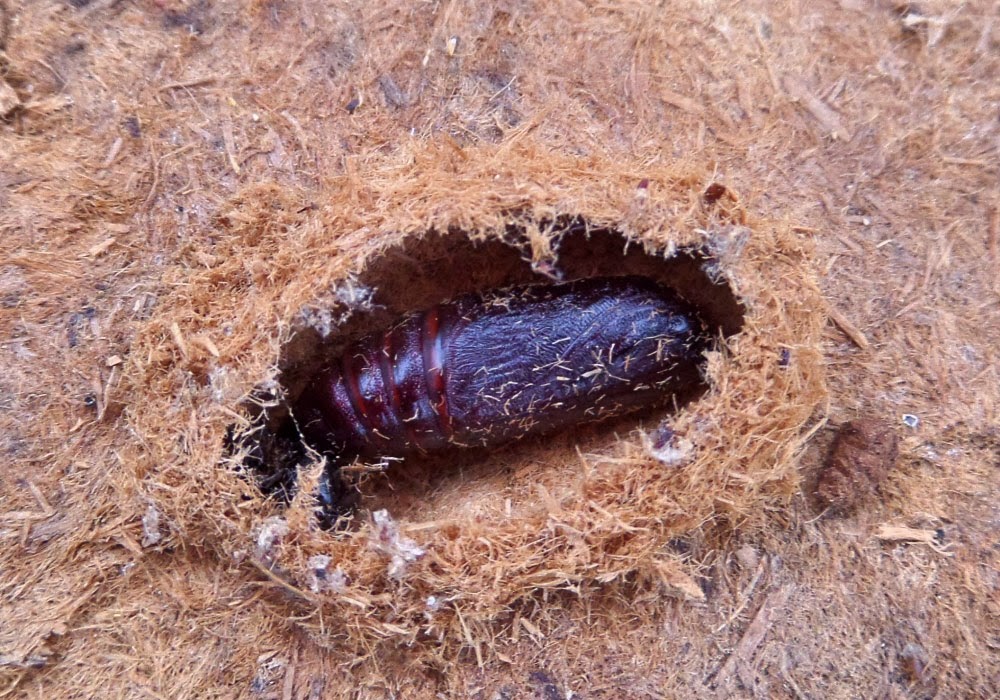One thing I've learnt is that when you get out and about you
never know what that day will bring and that was certainly the case again the
other week when I went to do a bit of underground Bat recording organised by Samuel
Ducept and Miguel Gailledrat of Vienne Nature. We met at the bureau at 9am which is early enough for me in winter and
as soon as everyone was present set of in two vehicles, 5 people in each to go
our separate ways for the day.
I must mention that for some unknown reason it seems that
it’s mainly females in France
that are “into” bats and Saturday was no exception. Other than Sam and Miguel I
was the only male the other 7 being “girls”, (any female under about 35 or
possibly 40 is a girl to me these days).
We were going to try and research some underground cavities
that either hadn't been looked at before or hadn't been researched for several
years. These are all old workings, principally underground quarries in the
first instance to provide the limestone that was used to build the châteaus and
houses and most were then used for other functions, storing food such as cheese
if part of a large property or used as champignonnières – commercial mushroom
production. This was the principle means of commercial mushroom production in France
during the 19th century until the middle of the 20th
century thanks to the ideal conditions they provided, a more or less constant
temperature, easy to regulate air flow and a good level of humidity. The
process is quite complex and rather than make gross errors I have linked to a
good site below in French with some interesting old photos but all methods
required the use of containers filled with compost made with a mix of manure
and straw plus lime.
Click on photos to enlarge.
These old underground caves or cavities are always on
private land, often some distance from a road and sadly many have become
blocked or overgrown. Of course overgrown or even partially blocked isn't necessarily a problem for over wintering bats providing they still have reasonable
access but it obviously reduces the ability to record numbers effectively. Inevitably
for us it meant drawing several blanks which is always disappointing however we
did manage to find and gain access to several caves of varying sizes over the
course of the day even when it meant overcoming a few obstacles.
It’s probably not a surprise to anyone that these caves are
used by all manner of other species besides bats and in two caves there was the
unmistakable and all pervasive smell of fox and even a brief glimpse of one as
it ran away from our lights. Large numbers of Peacock butterflies and literally
hundreds if not thousands of Herald moths Scoliopteryx
libatrix hibernating all over surfaces of one cave and even a small cluster
of Eristalis tenax hoverflies in a
shallow hole in the rock face. There are always small clouds of lethargic
mosquitoes and other midges waiting for spring and even quite large numbers of
chocolate coloured slugs in one cave.
Not all bats favour caves to over winter with many species
using houses, buildings or cavities in forest trees. The common pipistrelle Pipistrellus pipistrellus, one of the
commoner bats prefers buildings and when found in a cave it will usually be
near the entrance as will be Barbastelle Barbastalla
barbastellus. The Large and Small Horseshoe bats are to be more likely
found far from the entrance in the warmer air where they can sometimes remain moderately
active even flying around sometimes and as they are often not actually asleep
greater care needs to be taken not to disturb them.
Totals for the day.
Greater Horseshoe bat 73
Lesser Horseshoe bat 12
Brown Long eared bat 5
Daubentons bats 8
Whiskered bat 42
Geoffroy's bat 23
Natterer's bat 6
Bechstein's bat 5
Greater mouse-eared bat 33Although there was a reasonable number of Greater Horseshoe bats they weren't in substantial groups.
Chris
















.jpg)






























